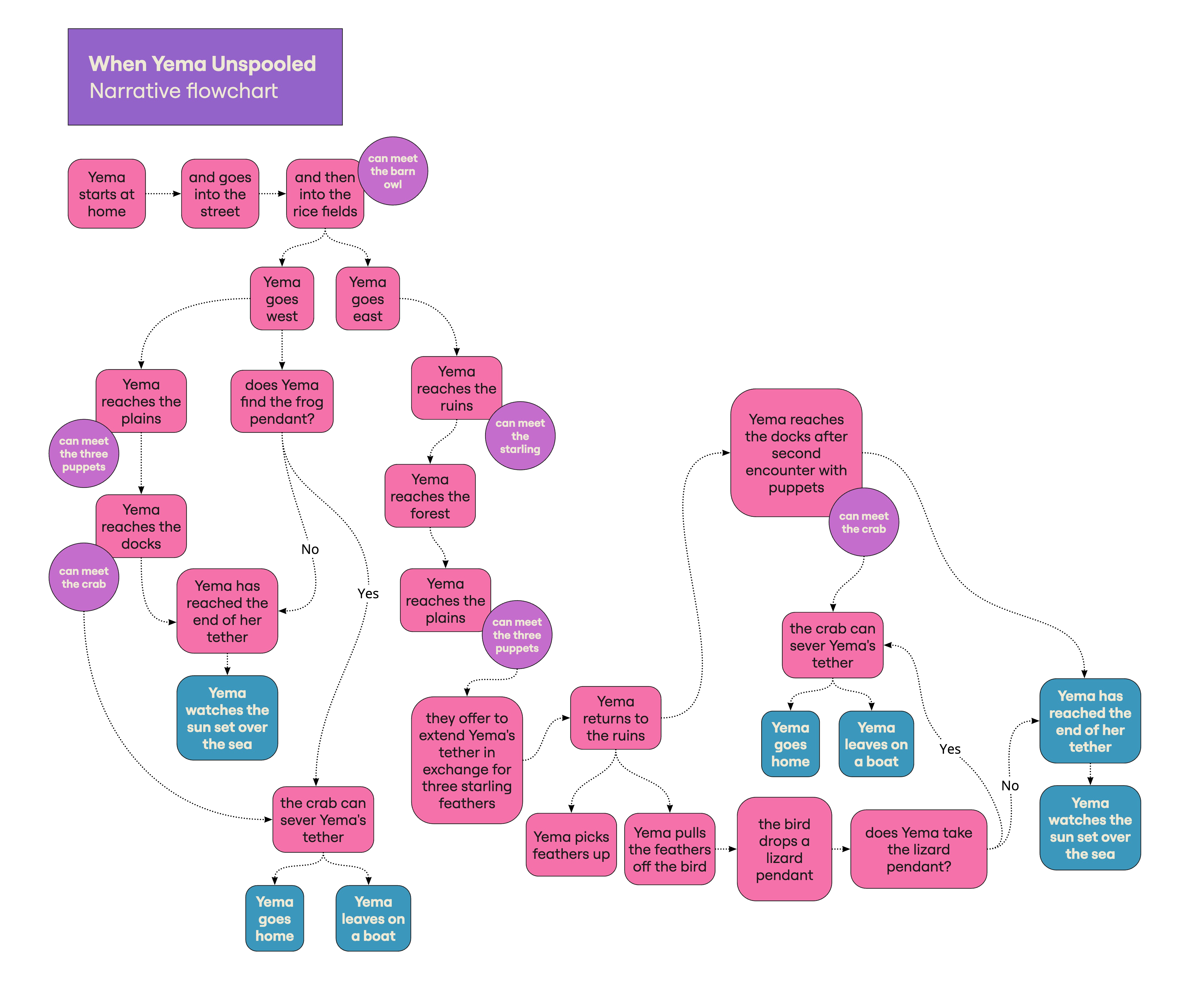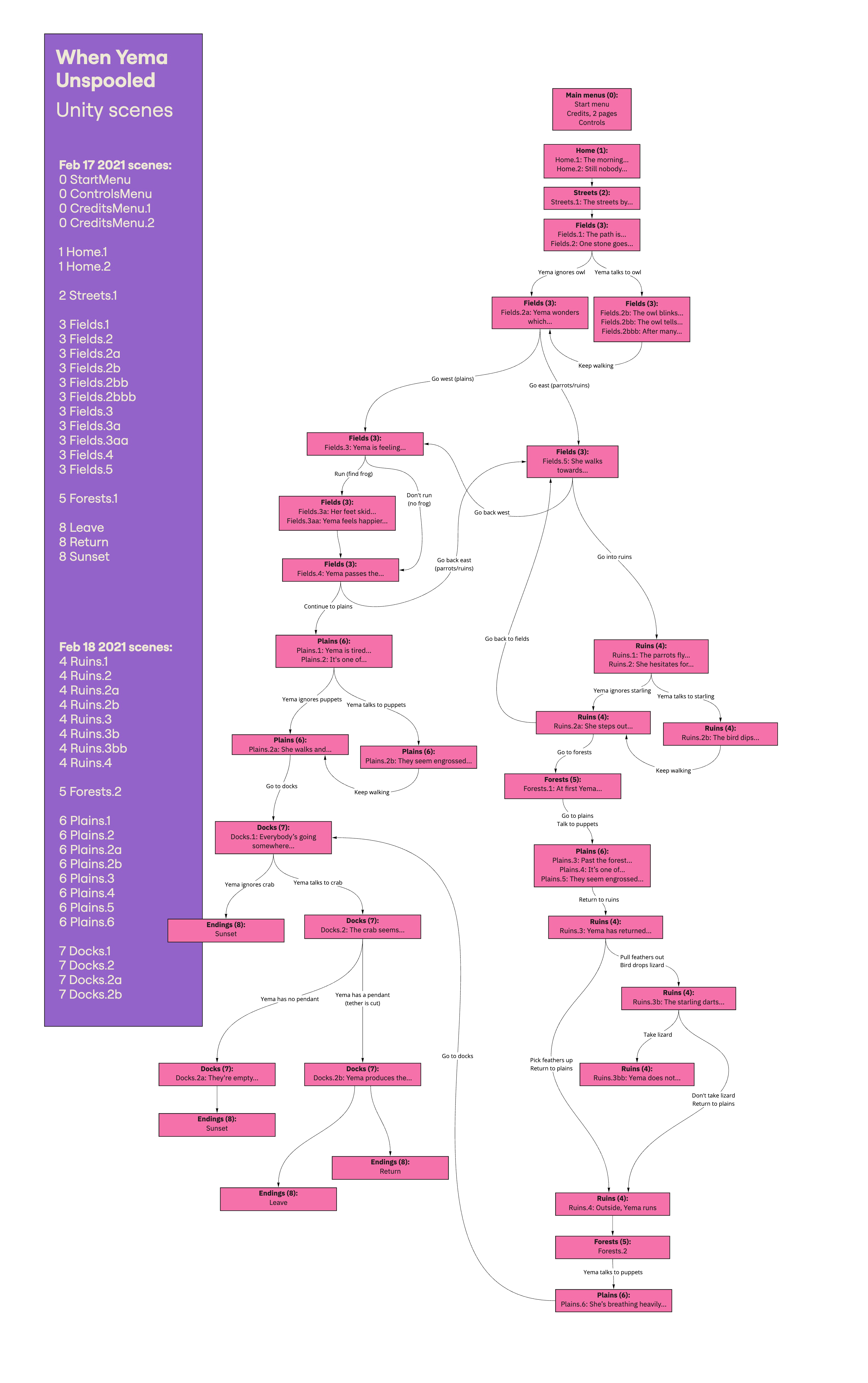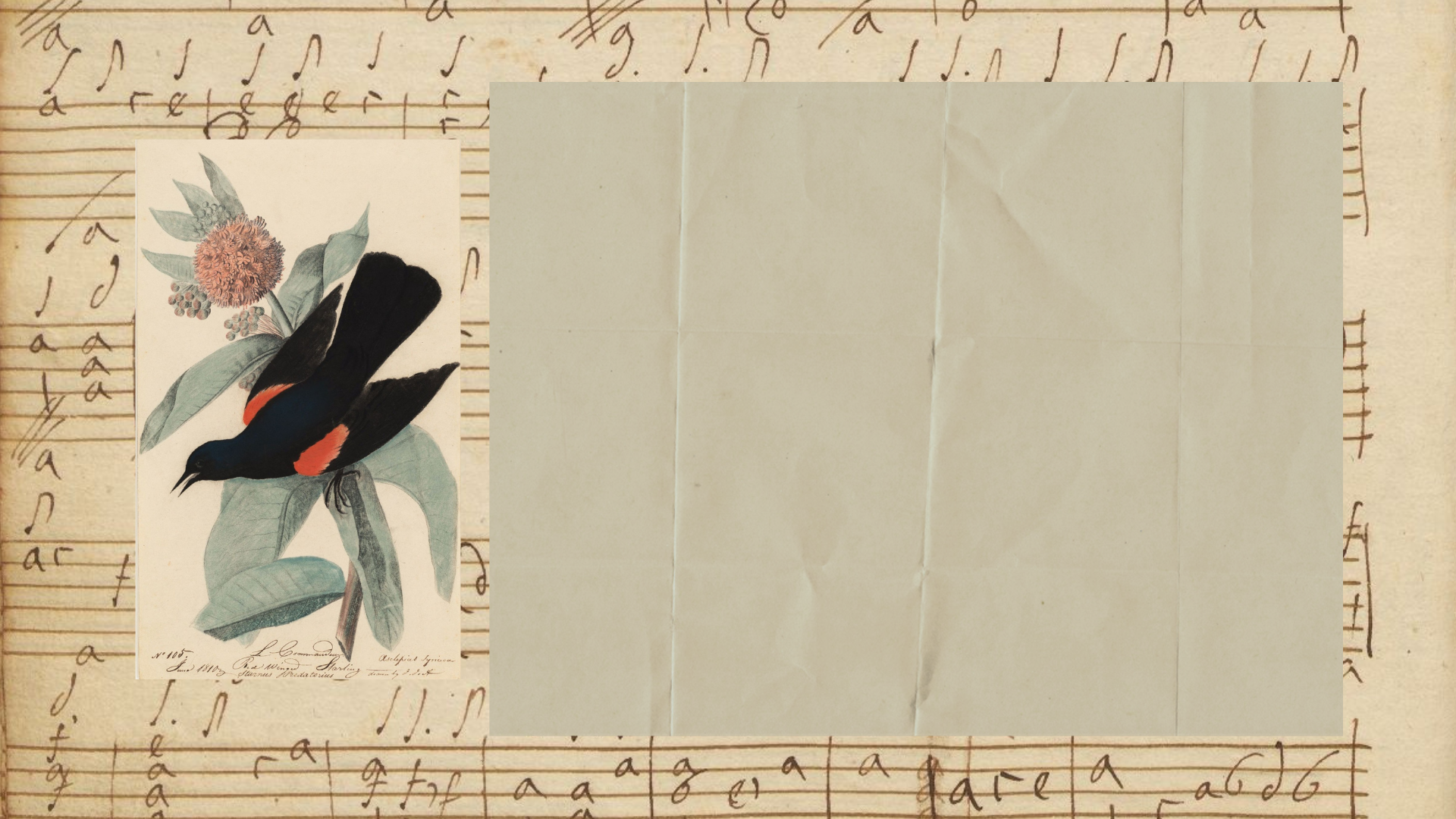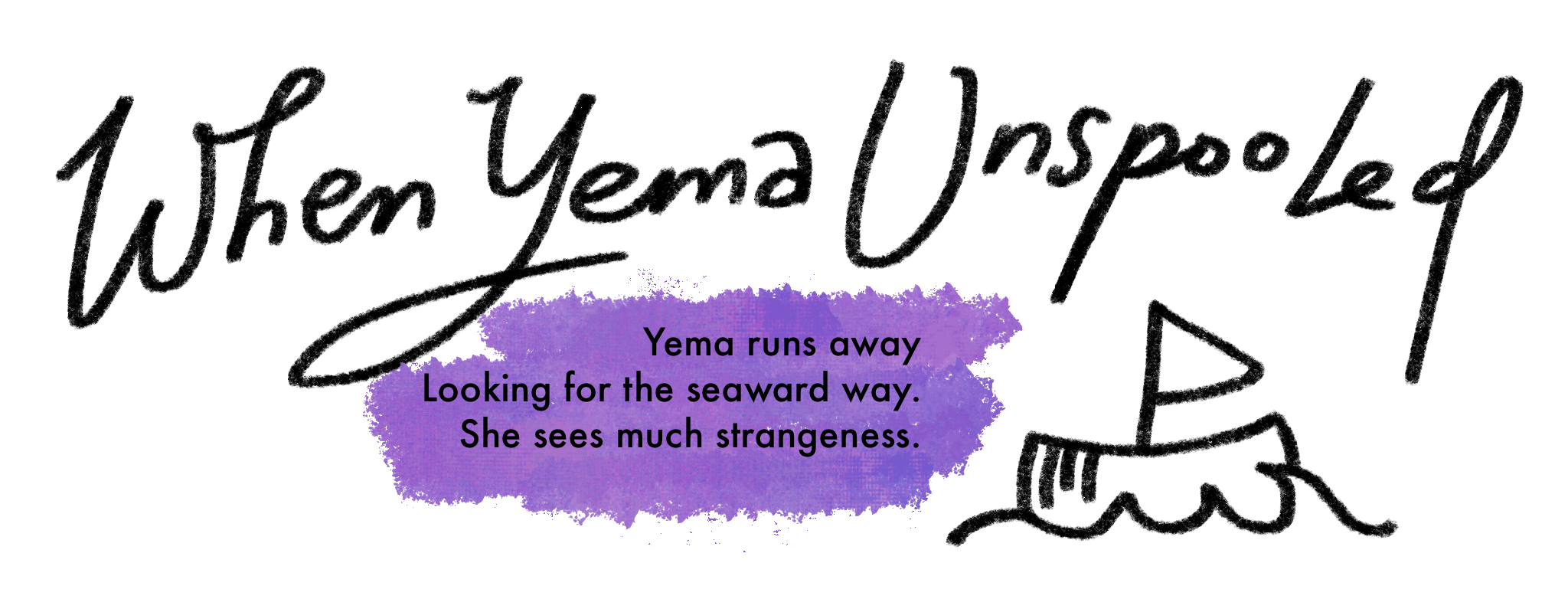01 / Game design doc, Feb 18 '21
GitHub: https://github.com/nebulousmango/When-Yema-Unspooled
Document references:
Game overview
Brief
Yema finds herself unattended at home one morning, and seizes this opportunity to sneak out and explore the world outside. But there’s a catch: as she gets further away from her home, she strains at her slowly unspooling tether. The well-meaning tether is meant to keep her safe, but as Yema sees more of the outside she weighs her choices of returning to the security of her home, or snapping the tether and being free to go as far as she wishes.
Gameplay
You play as Yema, and advance through the game by clicking through hypertext options. The player’s agency is limited to which directions they decide to move in, and how they interact with the characters they meet along the way.
World
Yema’s world:

Levels
- Home: where Yema begins.
- Streets: Yema ends up here after sneaking out of her home.
- Rice fields: past the streets. The fields span many miles, and Yema can choose to explore in either the west or eastward direction. Yema meets her first character here: the barn owl.
- Ruins: east of the rice fields, where Yema finds the ruins of a crumbling and weather-worn stone temple. Yema meets a red-winged starling here, who misleads her and sends her in the wrong direction.
- Forests: past the ruins.
- Plains: west of the rice fields. Yema can reach this level directly from the rice fields, or after she has crossed the forests. Yema meets the three puppets and their travelling show here.
- Docks: west of the plains, and where Yema’s journey ends. Yema can choose to get on a boat at the docks and sever the tether, or return home. Either option ends the game.
Starting conversations with characters is optional: Yema can choose to ignore them as she passes their locations, or she can choose to engage. The one exception is when Yema meets the puppets after leaving the forest: she can't move forwards because her tether has reached its end, and the only way to proceed is to interact with the puppets.
Yema can also retrace her steps at certain points in the game (e.g., she can move back to the previous location).
Yema’s journey:

In higher detail:

Controls
As a text-based game, you interact with the game using mouse controls. Clicking on the hypertext loads a new scene with more text.
The player can return to the previous scene at most points of the game, which lets them try different outcomes within the same playthrough.
Visual design
Graphics
The game uses photographs, paintings and prints to resemble a travel journal. Some scenes are made up of a background image, a foreground image of a sheet of paper, and a secondary foreground image signifying a location in the game.

Typefaces
Text is placed against the sheet of paper. Headers and buttons use the Work Sans medium weight, and the body text uses the Taviraj medium weight.
Colours
- #bb765e: for button gradient
- #eadcc4: for button gradient
- #323232: for main body text
Unity assets
Images
Foreground images:
- ‘Home’ is represented by a picture of Moroccan mud houses.
- ‘Streets’ is represented by a picture of a street in 1890s Madras.
- ‘Rice fields’ is represented by a woodblock print by Toshi Yoshida.
- ‘Ruins’ is represented by a picture of a stone temple in Bengal.
- ‘Forests’ is represented by a picture from Great Falls Park by Hunter Kotlinski.
- ‘Plains’ is represented by an oil sketch by Frederic Edwin Church.
- ‘Docks’ is represented by a woodblock print by Hiroshi Yoshida.
- ‘Barn owl’ is represented by a painting by Jan Wittenberg.
- ‘Red-winged starling’ is represented by a drawing by John James Audubon.
- ‘Puppets’ is represented by a picture of a puppet show by the Paper Monkey Theatre.
- ‘Crab’ is represented by a print by Louis Gonse.
- The ‘frog pendant’ is represented by a picture of a frog effigy pendant from Panama.
- The 'lizard pendant’ is represented by a picture of a lizard pendant from Panama.
- The seven artefacts scattered across the story’s pages are all from the Walters Art Museum’s digital Ancient Americas collection.
Background images:
- The main menu uses an illustration by Oriane Brunat.
- The controls and credits menus use a drawing of two cats by Katsushika Hokusai.
- Some story pages’ backgrounds use a picture of a lute tablature manuscript from the Houghton Library’s collection.
- Some menus use pictures of Italian lace patterns from the Houghton Library’s collection.
- The ‘Yema watches sunset’ and ‘Yema leaves on boat’ endings use a print by Hiroshi Yoshida for their backgrounds.
Audio
- Buttons use a page flip sound effect by Sound Jay.
- Each scene is loaded with a background audio of ambient sound from BBC Sound Effects:
- Main menu, credits pages and controls page: Laying a table in preparation for a meal
- Home: Village Atmosphere
- Streets: Hong Kong Street Market
- Fields: Red Bishop cheeping
- Ruins: Dawn chorus: Madumbalai National Park
- Forests: Rainforest Atmosphere
- Plains: Woodland Roadside: Waitomo
- Docks and Endings: sea and gulls from FreeSoundsLibrary
Get When Yema Unspooled
When Yema Unspooled
Yema untethers towards the sea.
| Status | Released |
| Author | sitara |
| Genre | Interactive Fiction |
| Languages | English |
More posts
- 07 / Devlog, May 4 '24May 04, 2024
- 06 / Devlog, Sep 17 '23Sep 17, 2023
- 05 / ColophonJan 13, 2023
- 04 / Devlog, Feb 19 '21: Unity processApr 25, 2021
- 03 / Devlog, Feb 19 '21: postmortemApr 22, 2021
- 02 / Narrative guide, Feb 18 '21Feb 18, 2021
